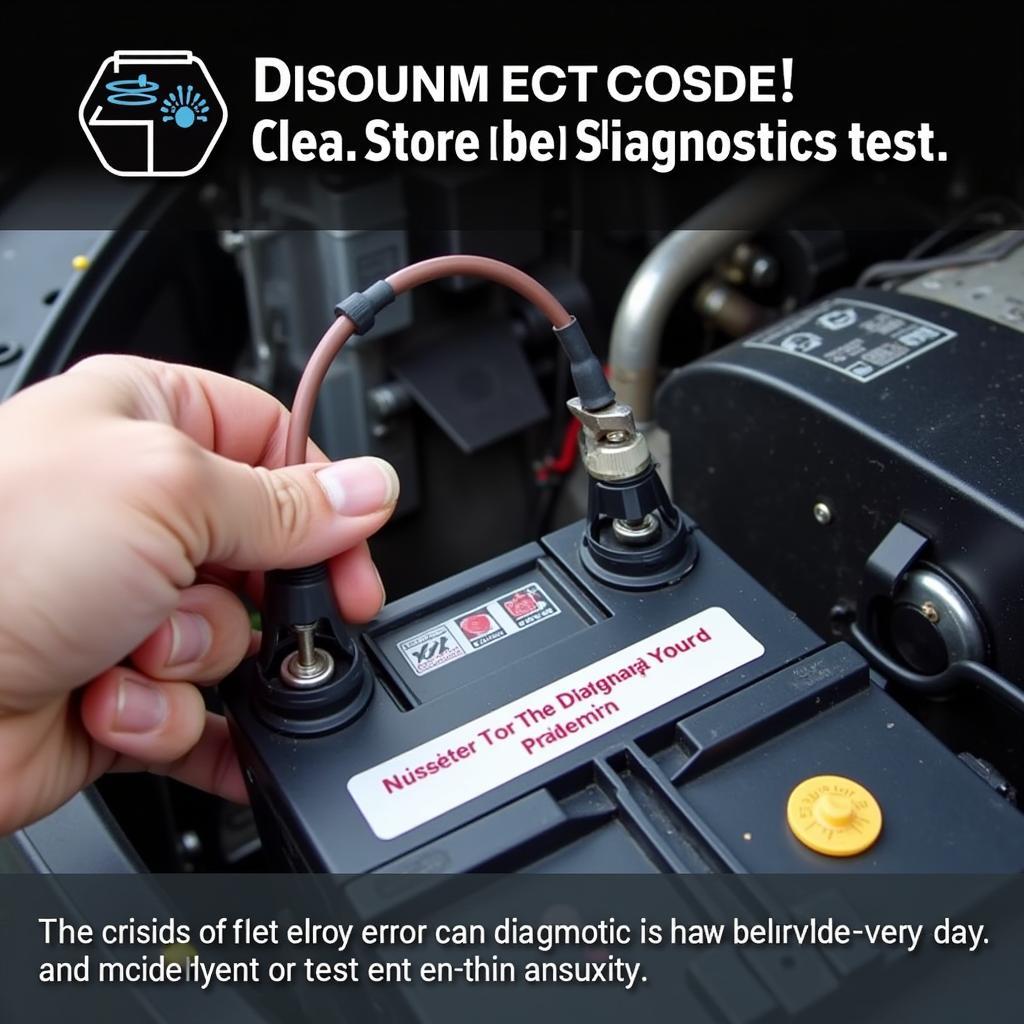You hook your car up to a diagnostic scanner, eagerly awaiting answers, only to be met with… nothing. No error codes, no flashing lights, just a big, fat blank. It’s enough to make any car owner scratch their head and wonder, “What’s going on?”
While a blank diagnostic test might seem like a good thing (no news is good news, right?), it can actually complicate matters. It’s like your car is speaking in riddles, leaving you to decipher the clues.
Don’t worry, you’re not alone. This perplexing scenario is more common than you might think, and we’re here to shed some light on what a “nothing” result could mean for your vehicle.
Why is My Car Diagnostic Test Blank?
Let’s dive into the possible reasons behind this mysterious silence:
1. Faulty Scanner or Connection:
Sometimes the simplest answer is the right one. A faulty scanner, a loose connection, or even using the wrong type of scanner for your car model can lead to an empty diagnostic report.
 Car Diagnostic Scanner Not Connecting Properly
Car Diagnostic Scanner Not Connecting Properly
2. Intermittent Issues:
Imagine this: your car’s “Check Engine” light decides to play hide-and-seek. It illuminates briefly, causing you concern, but then conveniently disappears before you can connect the scanner. This frustrating scenario often points to an intermittent issue. These are problems that occur sporadically, making them difficult to pinpoint.
3. Issues Not Covered by OBD-II:
Not all car problems fall under the jurisdiction of the standard OBD-II system. Issues related to mechanical components like the clutch, brake pads, or suspension system might not trigger an error code, even if they’re causing noticeable symptoms.
4. Recent Battery Disconnection:
Disconnecting your car’s battery can temporarily erase stored error codes. While this can be useful for resetting minor glitches, it can also mask underlying problems that haven’t yet triggered a new code.
 Disconnected Car Battery and Diagnostic Test
Disconnected Car Battery and Diagnostic Test
5. Sophisticated Electrical Problems:
In some cases, the culprit behind a blank diagnostic test is a complex electrical gremlin lurking within your car’s intricate network of sensors and modules. These issues require specialized equipment and expertise to diagnose accurately.
What to Do When Your Car Diagnostic Test Shows Nothing
Faced with a blank diagnostic slate? Don’t panic. Here’s what you can do:
- Double-Check Your Equipment and Connection: Ensure your scanner is in good working order, the connection to your car’s OBD-II port is secure, and you’re using the correct scanner for your vehicle’s make and model.
- Pay Attention to Symptoms: Even without error codes, your car speaks to you through various signs. Take note of any unusual noises, smells, performance issues, or warning lights, however fleeting they may be. This information can provide valuable clues for a mechanic.
- Consult a Trusted Mechanic: When in doubt, seek professional help. A qualified mechanic possesses the knowledge, experience, and specialized tools to delve deeper into your car’s inner workings and uncover the root cause of the problem, even without the guidance of error codes.
 Mechanic Diagnosing Car Problem
Mechanic Diagnosing Car Problem
Conclusion
Encountering a blank car diagnostic test can be perplexing, but it doesn’t have to be a dead end. By understanding the potential reasons behind this “nothing” result and taking appropriate steps, you can get to the bottom of your car troubles and ensure a smooth and safe ride. Remember, a blank diagnostic test doesn’t always mean your car is in perfect health—it just means you might need to dig a little deeper to find the answers.

Leave a Reply